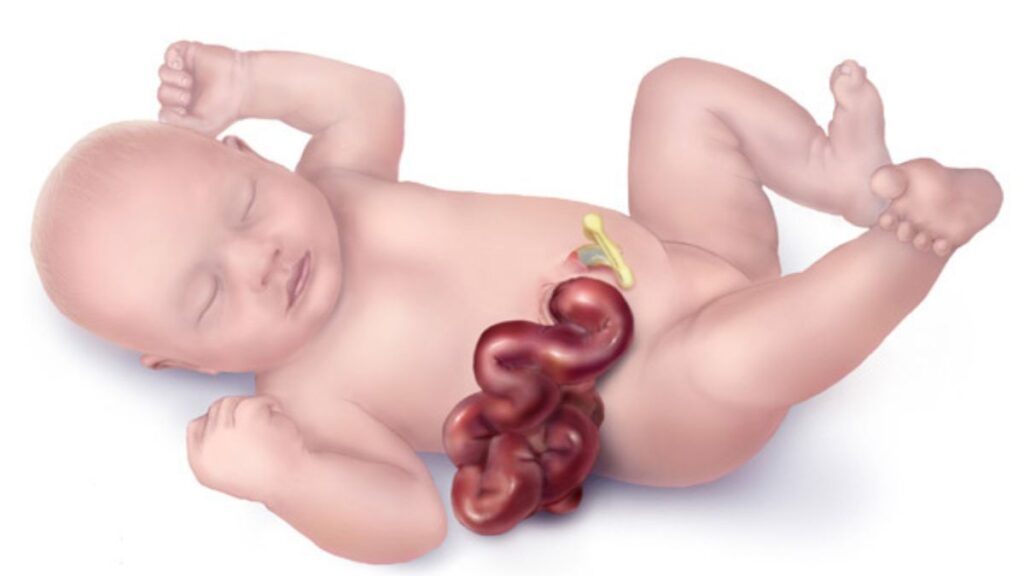Introduction to Gastroshiza
Gastroshiza is a complex condition that affects newborns, yet it often flies under the radar. This congenital defect occurs when a baby’s intestines develop outside of their body, leading to various challenges right from birth. Understanding gastroshiza is crucial for parents and caregivers as they navigate this medical landscape. By shedding light on its causes, symptoms, and treatment options, we aim to empower families with knowledge and support. Whether you’re seeking information for yourself or someone you love, delving into the world of gastroshiza can make all the difference in managing this condition effectively. Let’s explore what you need to know about gastroshiza together!
What Causes Gastroshiza?
The exact cause of gastroshiza remains unclear. However, researchers have identified several potential factors that may contribute to its development. Genetic mutations play a significant role, with certain variations increasing the likelihood of this condition.
Environmental influences are also under investigation. For instance, maternal exposure to specific substances or infections during pregnancy might heighten risk levels.
Nutritional deficiencies in expectant mothers could be another contributing factor. A lack of essential vitamins and minerals is thought to impact fetal development and lead to gastrointestinal issues.
Additionally, some studies suggest that family history can increase susceptibility. If parents have had similar conditions, their children might face higher probabilities as well.
Understanding these causes is crucial for prevention and early intervention strategies in managing gastroshiza effectively.
Common Symptoms of Gastroshiza
Gastroshiza presents several noticeable symptoms that can vary in severity. The most recognizable sign is the protrusion of abdominal organs outside the body through a defect in the abdominal wall. This typically appears shortly after birth.
Additionally, affected infants may show signs of feeding difficulties. Since their intestines are exposed, they often struggle with digestion and nutrient absorption.
Another symptom to watch for includes vomiting, particularly if it occurs frequently or contains bile. This can indicate complications requiring immediate attention.
In some cases, there might be associated anomalies affecting other organs or systems within the body. Monitoring overall health during early development is crucial for children diagnosed with gastroshiza.
If any of these symptoms manifest, seeking medical advice promptly helps ensure comprehensive care and support for both child and family members navigating this condition.
Diagnosis and Treatment Options
Diagnosing gastroshiza typically involves a combination of imaging techniques and physical examinations. Prenatal ultrasounds are often the first step, allowing doctors to detect abdominal wall defects before birth. After delivery, healthcare providers confirm the diagnosis through clinical evaluation.
Treatment for gastroshiza generally requires surgical intervention shortly after birth. The primary goal is to return the intestines back into the abdominal cavity and repair the defect in the abdominal wall. In certain cases, staged surgeries may be necessary if immediate closure isn’t possible due to swelling or other complications.
Post-operative care is crucial for recovery. Infants will need monitoring for feeding issues and potential infections at the surgical site. Depending on individual circumstances, ongoing medical support might be required as they grow older to address any related health concerns.
Lifestyle Changes to Manage Gastroshiza
Managing gastroshiza requires thoughtful lifestyle adjustments. A balanced diet is essential. Focus on nutrient-rich foods that support overall health and digestion. Incorporating fruits, vegetables, whole grains, and lean proteins can make a significant difference.
Staying hydrated plays a crucial role as well. Drinking enough water helps maintain digestive function. Aim for at least eight glasses daily to keep everything running smoothly.
Regular exercise is beneficial too, even light activities like walking or yoga can enhance circulation and reduce stress levels. Gentle movement supports gut health without putting extra strain on the body.
Routine check-ups with healthcare professionals ensure timely monitoring of the condition’s progress. Open communication about any changes in symptoms can lead to better management strategies tailored specifically for you.
Consider joining support groups or online communities focused on gastroshiza. Connecting with others facing similar challenges provides emotional relief and practical advice from shared experiences.
Complications and Risks Associated with Gastroshiza
Gastroshiza can lead to several complications if not addressed promptly. One of the most significant risks is infection. When the intestines are exposed, they become vulnerable to bacteria and other pathogens.
Another concern is bowel obstruction. The abnormal positioning of the intestines can create blockages that impede digestion and nutrient absorption. This situation often requires surgical intervention.
Additionally, individuals with gastroshiza may face long-term issues like nutritional deficiencies. Since parts of the digestive system might be outside the body or malpositioned, proper nutrient uptake becomes challenging.
There’s also a psychological aspect to consider. Living with gastroshiza can impact mental health due to ongoing medical treatments and physical limitations.
Regular monitoring by healthcare professionals is essential to address these potential complications early on and manage overall health effectively.
Coping Strategies for Those Living with Gastroshiza
Living with gastroshiza can be challenging, but several coping strategies can enhance daily life. Connecting with support groups is essential. Sharing experiences with others facing similar challenges fosters a sense of community and understanding.
Education plays a vital role in managing this condition. Learning more about gastroshiza helps individuals make informed decisions regarding their health care and lifestyle choices. Knowledge empowers patients to advocate for themselves effectively.
Mindfulness techniques, such as meditation or yoga, can help alleviate stress related to health concerns. These practices promote relaxation and emotional well-being, which are crucial for anyone navigating medical difficulties.
It’s also important to establish a strong support network of friends and family members who understand the situation. Their encouragement and assistance can make a significant difference during tough times.
Adopting healthy eating habits tailored to individual needs may improve overall comfort levels as well.
Conclusion
Gastroshiza can be a challenging condition for both individuals and their families. Understanding its causes, recognizing the symptoms, and seeking timely diagnosis are crucial steps in managing this congenital defect. Treatment options vary from surgical interventions to ongoing medical care.
Lifestyle changes can play a significant role in enhancing quality of life. Making adjustments to diet, exercise routines, and emotional well-being strategies can empower those affected by gastroshiza to live more comfortably.
It’s essential to stay informed about potential complications and risks associated with this condition as it may lead to further health issues if not properly addressed. Developing coping strategies is equally important; support networks, therapy, or engaging with communities facing similar challenges can provide comfort.
Living with gastroshiza requires awareness and proactive management but understanding the intricacies of this condition enables better navigation through its complexities. Awareness leads to improved outcomes for patients and encourages support for research into better treatment methods moving forward.






